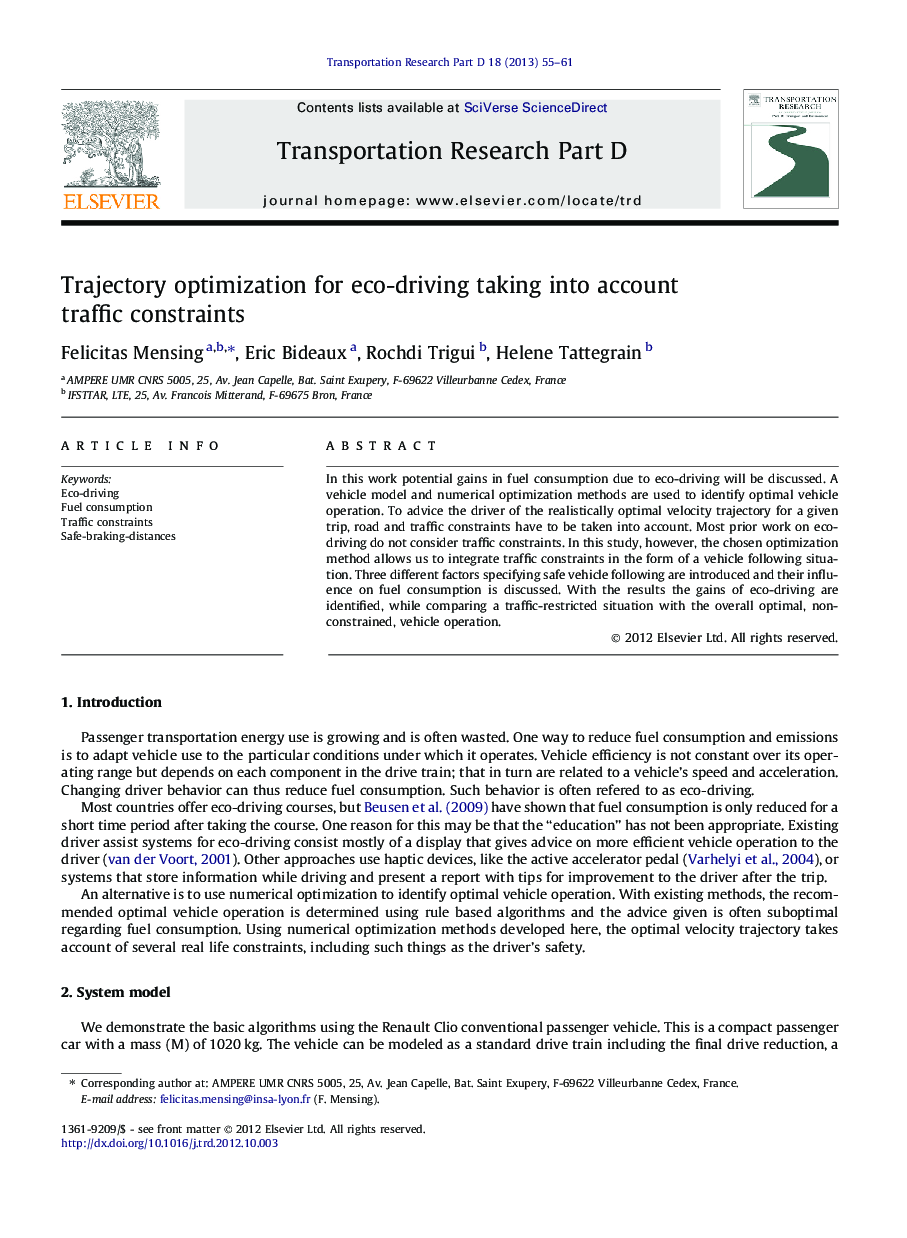| Article ID | Journal | Published Year | Pages | File Type |
|---|---|---|---|---|
| 1065892 | Transportation Research Part D: Transport and Environment | 2013 | 7 Pages |
In this work potential gains in fuel consumption due to eco-driving will be discussed. A vehicle model and numerical optimization methods are used to identify optimal vehicle operation. To advice the driver of the realistically optimal velocity trajectory for a given trip, road and traffic constraints have to be taken into account. Most prior work on eco-driving do not consider traffic constraints. In this study, however, the chosen optimization method allows us to integrate traffic constraints in the form of a vehicle following situation. Three different factors specifying safe vehicle following are introduced and their influence on fuel consumption is discussed. With the results the gains of eco-driving are identified, while comparing a traffic-restricted situation with the overall optimal, non-constrained, vehicle operation.
► The effectiveness of various eco-driving approaches depend on traffic constraints. ► A theoretical improvement of fuel economy of 34% is found for a free flow urban setting. ► Taking into account safe urban traffic constraints reduces fuel gains from eco-driving by 16–54%.
